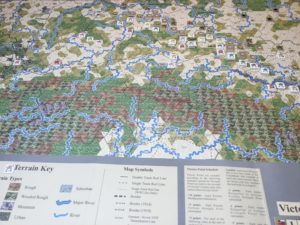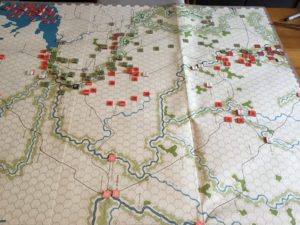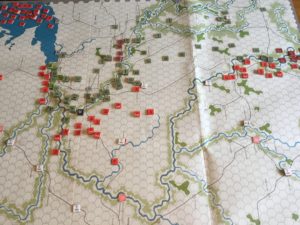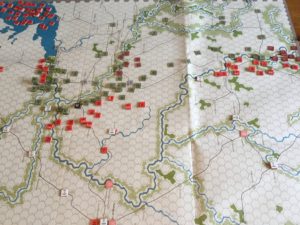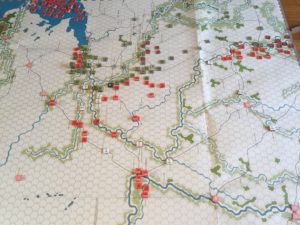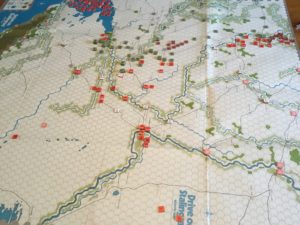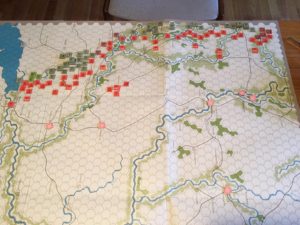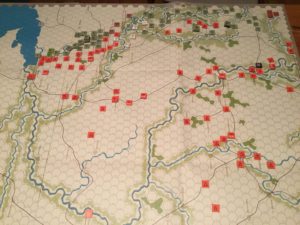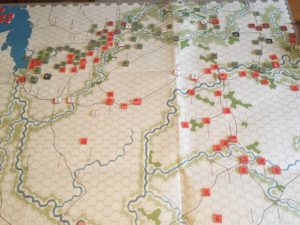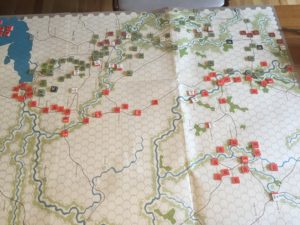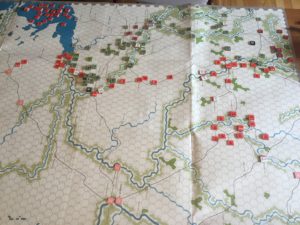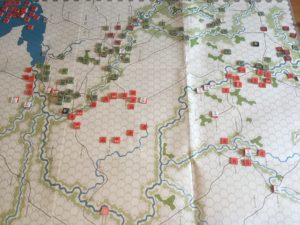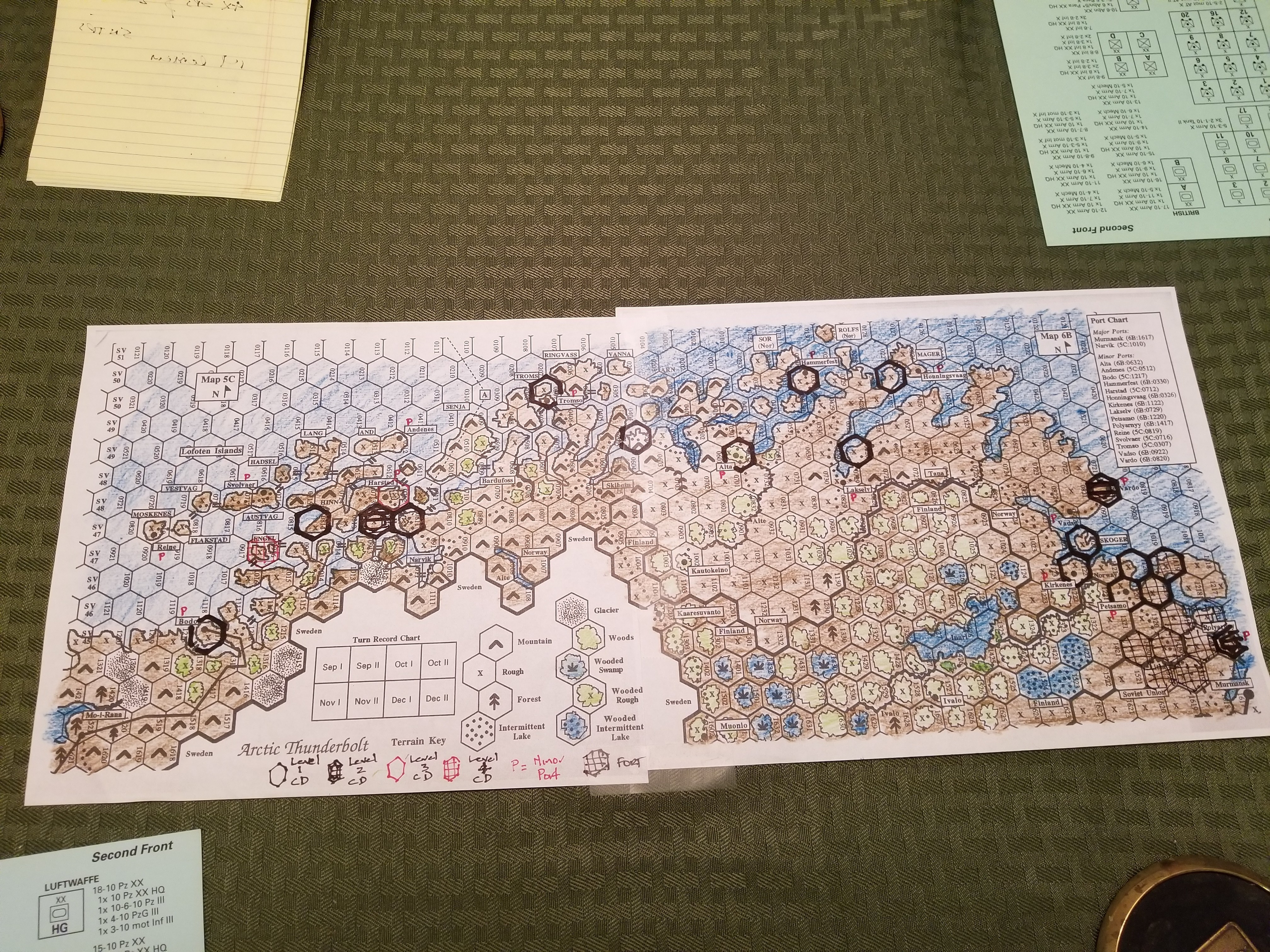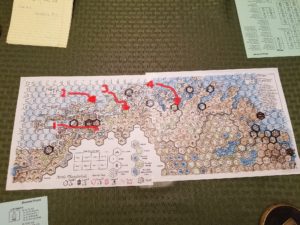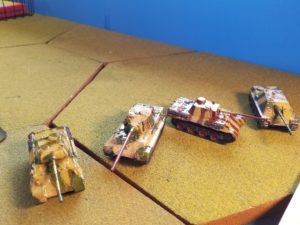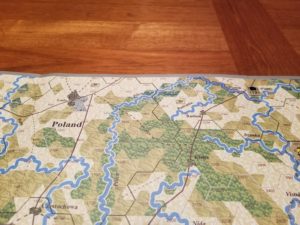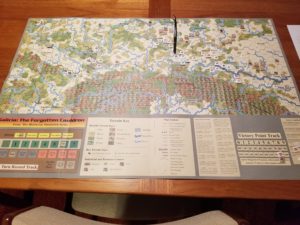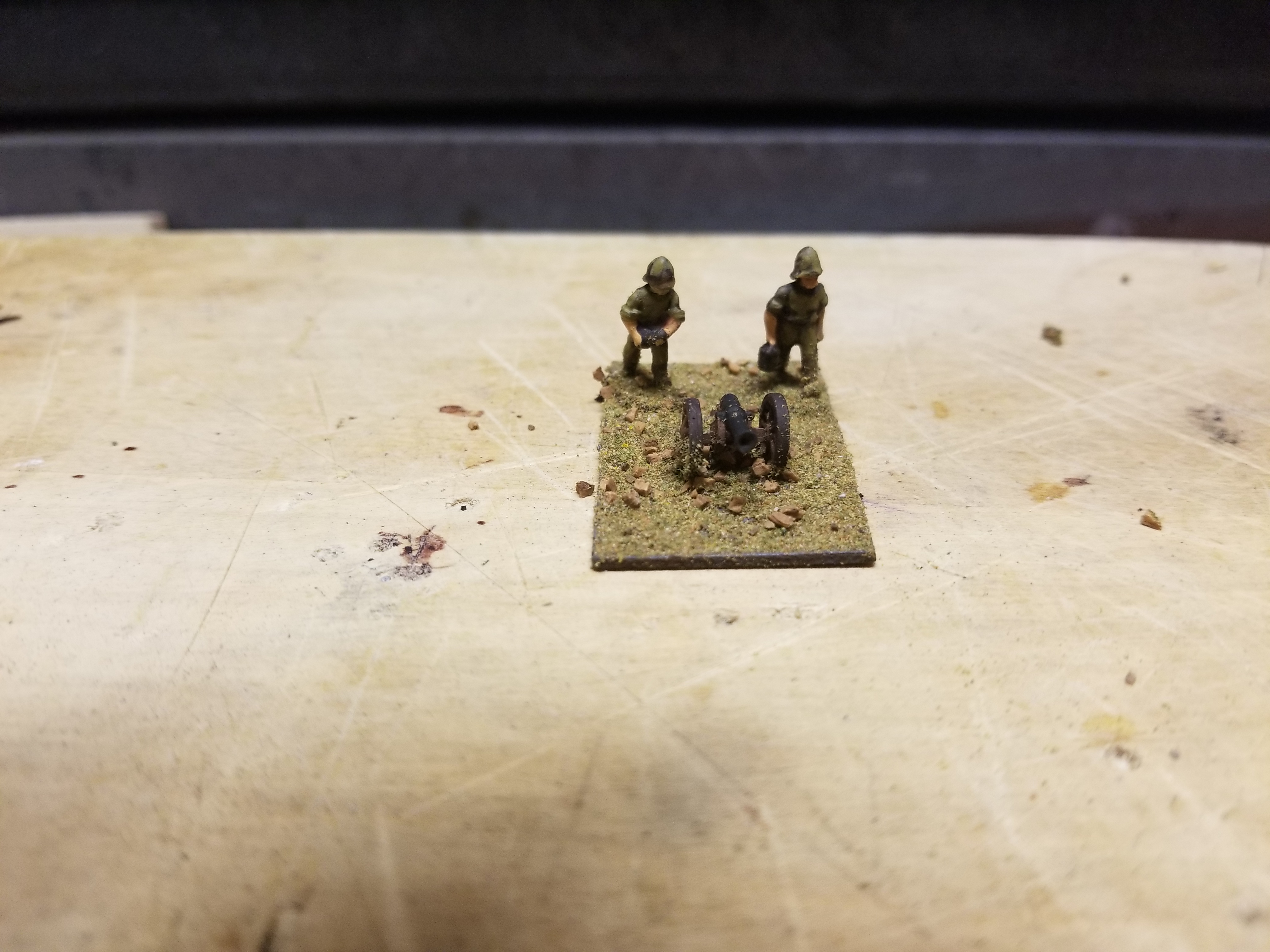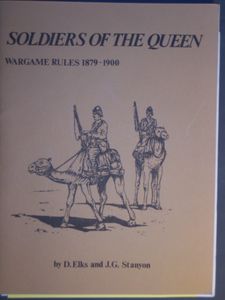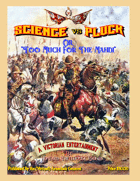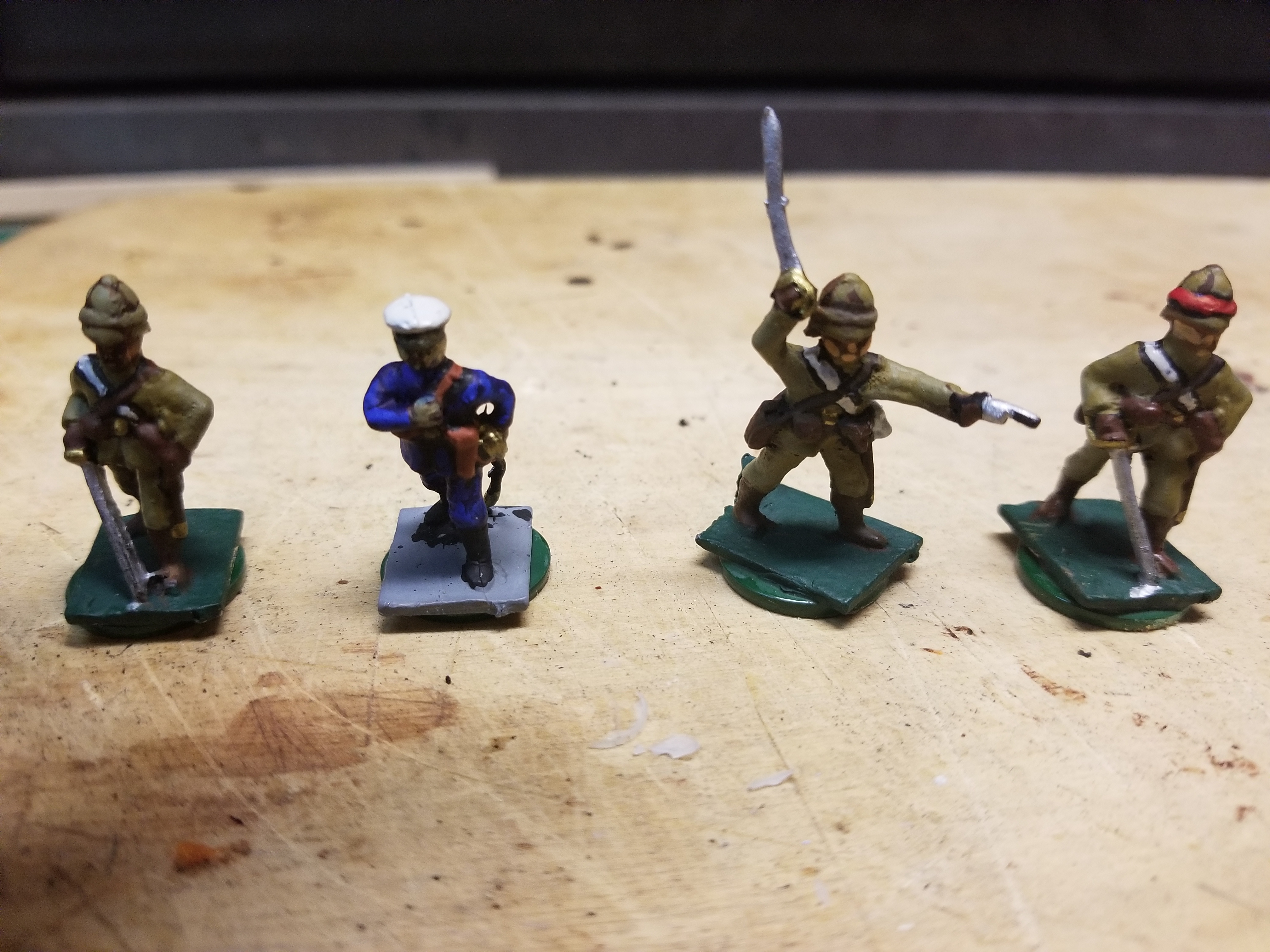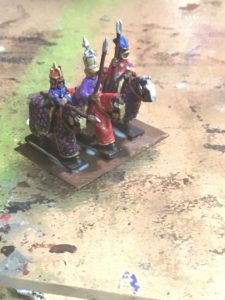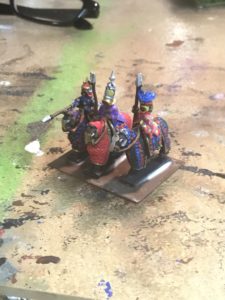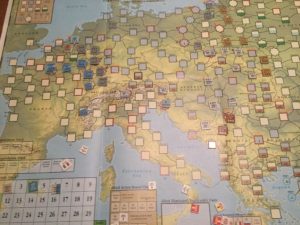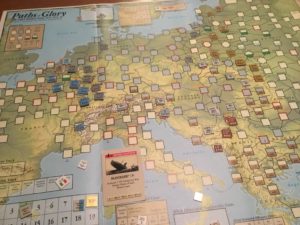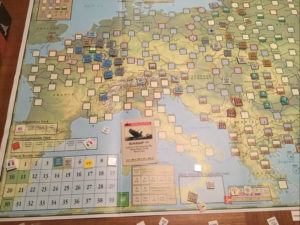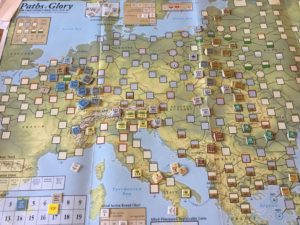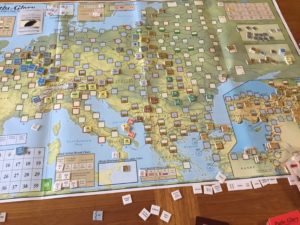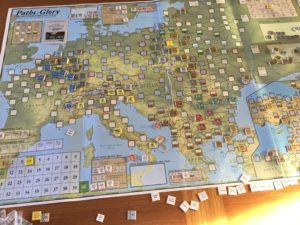Have worked my way through August and into early September. Each month has seven turns. This scenario will end in mid-September 1914.
Both sides are starting to go at it hammer and tongs. The CRT is bloody, with the unique counterattack option making even what in most games would be high odds attacks difficult for the attacker. In other words, an attacker with three times the strength points of the defender is really only working at one-to-one odds if counterattacked.
One rule I overlooked in my first post was supply point usage. Each headquarters has an allocated number of supply points to support attacks and counterattacks. An attack costs one supply point per four attacking factors, rounding fractions up. A counterattack costs one supply point per two counterattacking factors. Most headquarters start the game with either 30 or 40 supply points. They can receive replacement supply points and may transfer points between headquarters (one use for rail networks). Without supply, units function at one-half strength, except artillery, which cannot counterattack if out of supply. Supply lines are four movement points in length, with the attacking strength of a unit reduced by one for every hex beyond four movement points.
In this scenario, each army has an objective. These objectives reflect the historical initial plans of each country and help make the game solo friendly.
And then there are the scenario specific rules, which I won’t recount here except for the one I just realized I missed. The Austrians cannot reduce their losses if they choose to retreat. This reflects their extremely aggressive tactics which led to horrendous losses.
This box contains both Tannenberg and Galacia scenarios. These two scenarios can be linked, as well as linked with the separate introductory scenario/game The Schlieffen Plan.
Here’s a quick pic of the game currently in progress. I’m having fun with it…..a lot more fun than that damn Drive on Stalingrad fiasco.
